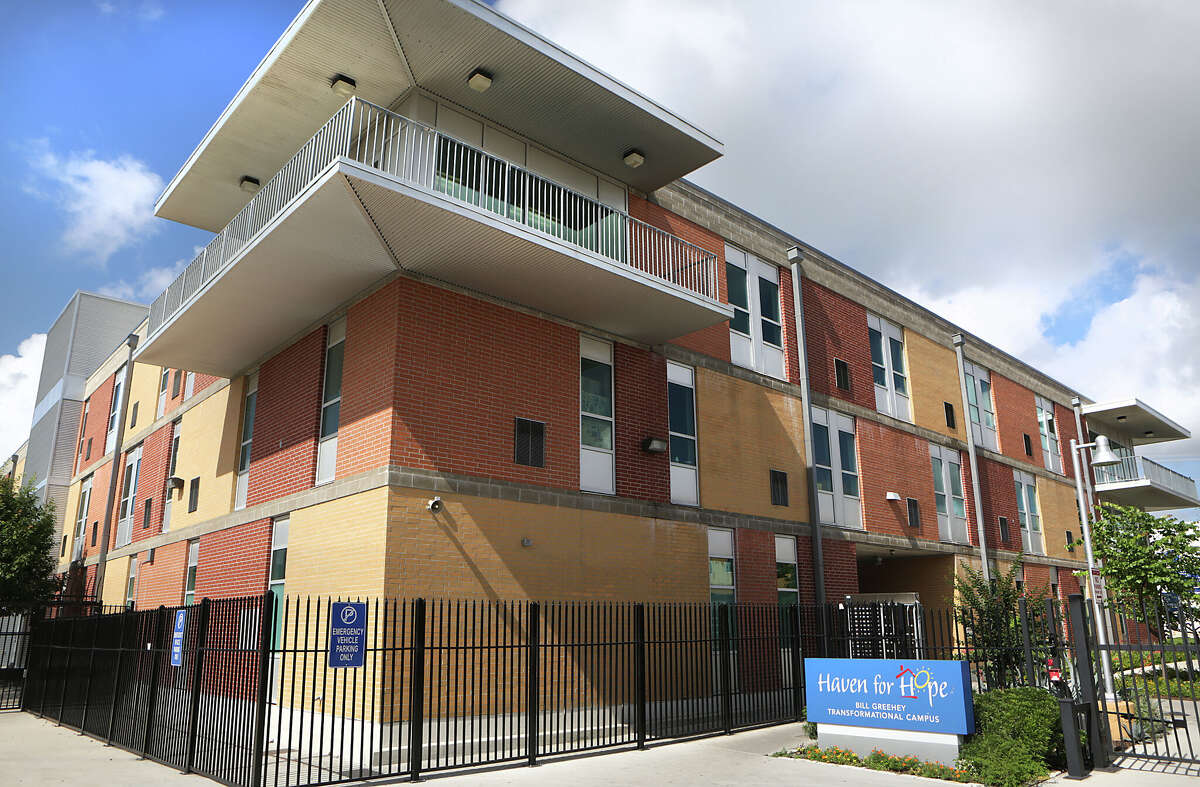
Haven For Hope remains an innovative community response to homelessness, but it is also just one piece in a larger community mosaic here that merits continued investment.
San Antonio Express-News
Katie Wilson, Leilah Powell, For the Express-News
For more than a decade, San Antonio and Bexar County have served as a model community addressing homelessness.
A critical step forward was the collaboration between government, nonprofits and the business community to develop Haven for Hope, which provides housing and services to people experiencing homelessness. Even as national focus shifted to “Housing First” — a strategy moving people into housing quickly and without preconditions to receive services — San Antonio was investing in a comprehensive system of care and shelter.
Through an alliance of homeless service providers, we slowed homelessness trends significantly by focusing on trauma-informed services and helping people rebuild their lives. However, the number of people experiencing homelessness will rise unless we continue to align on one critical goal: creating enough permanent housing options to meet the community’s need.
Economic conditions are driving increases in homelessness nationally. Every $100 increase in median rent increases homelessness by 9%, according to pre-pandemic data. Today, record numbers of families are sleeping in “overflow” at Haven for Hope with no signs of this trend slowing.
Without affordable housing options, our homeless response system struggles to move families out of shelters and off the streets into permanent housing.
San Antonio/Bexar County’s homelessness continuum of care lead agency, Close to Home, and the Alliance to House Everyone have a comprehensive plan to address chronic and family homelessness, and plans for youth and families fleeing domestic violence.
These community plans were authored and/or adopted by the city of San Antonio and Bexar County; they are implemented through the collective focus and resources of the city, county and state of Texas, streamlining efforts across federal, state and local funding to leverage greater impact for each targeted population.
Across the plans, there is a common thread: People need long-term affordable housing options they can sustain with appropriate wraparound services. Notably, access to affordable housing also prevents people from falling into homelessness. Permanent supportive housing, which has on-site services available, helps individuals and families overcome homelessness.
Our response system looks for answers wherever they can be found, internally and externally. A delegation led by the city of San Antonio recently visited Houston to learn from its successes. The biggest takeaway was the community’s focus on housing development. The city of Houston hasn’t contributed general funds but aligns entitlement funding, such as CDBG and HOME dollars, with its community of care lead agency’s strategy to increase housing options.
It’s important to note that HUD named Houston one of 10 national priority communities in 2011, allocating additional resources to tackle homelessness. That was four years before San Antonio launched our lead agency, Close to Home.
Houston’s HUD funds have increased exponentially over the last 12 years, and the city receives three times more federal funding from HUD to address homelessness. Close to Home and the Alliance are catching up — having doubled the funding allocation since starting in 2015. Only keeping national and local priorities aligned will maximize the opportunity for millions of additional federal dollars to flow into our community.
Recent positive steps such as the city's historic voter-approved housing bond encourage us to sustain momentum. The city’s strategic housing implementation plan calls for 1,000 units of accessible, affordable permanent supportive housing. While 283 units are now in process, more cross-sector and government investment is needed to meet this goal.
We can house everyone, but only if we continue investing in our current homeless response system while expanding housing options that are affordable for our residents.
Katie Wilson is executive director of Close to Home. Leilah Powell, executive director of LISC San Antonio, is board president of Close to Home. This commentary also reflects the views of representatives of the Alliance to House Everyone in San Antonio & Bexar County: Kim Jefferies, president and CEO of Haven for Hope; Nikisha Baker, president and CEO of SAMMinistries; Scott Ackerson, WestEast Design, and board member of Close to Home; and Katherine Dillard Gonzalez, researcher and consultant with Ladder Logik.